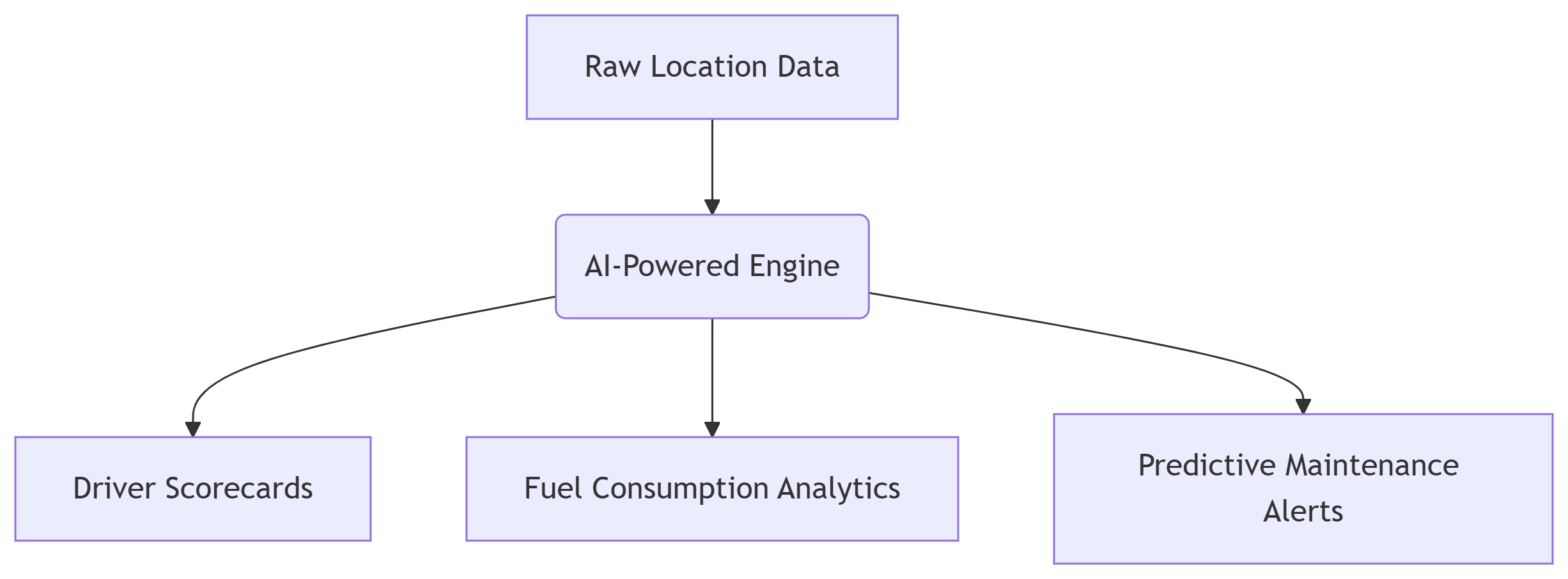

As logistics competition intensifies, 30% of transportation costs stem from inefficient fleet management (Berg Insight, 2024). With the commercial fleet management market set to hit $42B by 2027, GPS tracking is the core driver. This report decodes how to select GPS solutions for cost reduction, compliance, and competitive advantage.
1. Core Value & Industry Pain Points
Key Benefits:
15-25% fuel savings via route optimization (U.S. DOT)
20%+ asset utilization through real-time dispatch
35% accident reduction with driver behavior monitoring (FMCSA)
95%+ on-time delivery with precise ETAs
Critical Pain Points:
Hidden costs (idling, detours, fuel theft)
Asset security risks (theft, unauthorized use)
Compliance pressure (ELD mandates, HOS rules)
Reactive customer service
2. 7 Golden Selection Criteria
1. Precision & Reliability
Multi-constellation support: GPS + GLONASS + Galileo (±1.5m accuracy)
Signal resilience: Metal containers, urban canyons, underground sites
Backup tech: Cellular-assisted GPS (A-GPS)
2. Real-Time Tracking Capabilities
Update frequency: Sub-10-second refresh (vs. 1-5 min basic trackers)
Data compression: 50%+ data savings (e.g., CAN bus integration)
Offline caching: Stores 72+ hours of data during signal loss
Case Study: Maersk reduced incident response time by 80% with real-time tracking.
3.Battery Life & Durability
Power options: Hardwired (OBD-II) or 3+ year wireless battery
IP68/IP69K rating: Dust/waterproof for harsh environments
Anti-tamper tech: Geofence alerts + motion-triggered alarms
4. Intelligent Analytics Platform

Advanced features:
AI-powered idle time reduction
Carbon footprint calculators
Automated ELD logs
5. Compliance & Security
ELD compliance: FMCSA/HOS/DSM regulations
Safety suite:
Collision detection (G-sensor)
SOS panic buttons
Driver ID authentication
6. Integration Scalability
Sensor compatibility:
Temperature/humidity (cold chain)
Door open/close sensors
Cargo weight monitors
API ecosystem: TMS/ERP integration (SAP, Oracle, MercuryGate)
7. Cost Structure & ROI
Cost Type Entry-Level Premium
Hardware $50-$100/unit $150-$300/unit
Monthly Service $10-$20/unit $25-$40/unit
ROI Calculation (20-vehicle fleet):
Costs Savings
$14,400/year Fuel: $7,200
Maintenance: $2,500
Accident Reduction: $9,000
Net Annual Gain: $18,700+
Payback Period: <10 months
3. Future Tech Trends
5G + Edge Computing: Sub-second remote control (e.g., engine lock)
Blockchain Auditing: Immutable supply chain records
Autonomous Integration: Sensor fusion for self-driving trucks
ESG Compliance: Real-time emissions tracking
4. Procurement Strategy
Vendor Evaluation Matrix
Criteria Weight Key Checks
Technical Proof 30% Live environment test reports
Industry Cases 25% Same-scale client references
TCO 20% Hidden fees (setup/upgrades)
API Flexibility 15% Pre-built TMS connectors
Support SLA 10% 24/7 multilingual support
Conclusion: Building Your Digital Backbone
Top-tier logistics operators like DHL and UPS treat GPS tracking as a strategic nervous system, not a tool.
To avoid costly mistakes:
Prioritize scalable modular platforms over fixed-function devices
Demand real-world POC testing (not lab demos)
Embed data analytics into operational KPIs
In the age of Logistics 4.0, advanced tracking is the new competitive moat. The right solution transforms visibility into actionable intelligence – turning fleets into profit centers.
"Without granular tracking data, logistics optimization is aviation without instruments – dangerously inefficient."
– McKinsey Supply Chain Practice